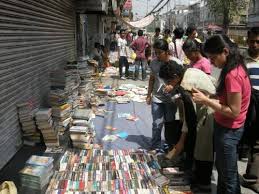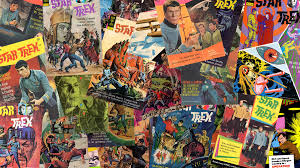Goopy Gyne Bagha Byne was not just a fantasy tale, it became a strong sociopolitical commentary on the notion of war and peace, writes Bhaskar Chattopadhyay in his book ‘The Cinema Of Satyajit Ray’.
When Satyajit Ray’s thirteen-year-old son complained to him one day that he only made films for adults, Ray decided to make a fun-filled adventure fantasy film for children. Finding the right story was the least of his problems, because Ray came from a family of illustrious writers of children’s literature. Of the abundant treasure trove of such stories that his ancestors—both male and female—had left behind as legacy, Ray chose one written by his grandfather, Upendrakishore Ray Chowdhury, who was one of the pioneers of the cultural renaissance of Bengal. This story, a fantasy of sorts, spoke about the amazing adventures of two simpletons from two neighbouring villages—Goopy, who liked to sing, and Bagha, who liked to play the dhol. But as luck would have it, despite their keen interest in singing and playing the dhol, nature had not bestowed either of them with the gift of music. When Goopy and Bagha rile the king with their tone-deaf cacophony, they are exiled from their respective villages and happen to meet in the middle of a dense forest, where they stumble upon the King of Ghosts, who gives them three magic boons. The first allows them to ask for any food or dress whenever they like. The second gives them each a pair of magic shoes so they can travel wherever they like in the blink of an eye. And in the third, and most important boon, they are given the gift of music, so much so that they are able to hold anyone in their magical thrall with their music. Armed with these three magic boons, they reach the kingdom of Shundi, only to learn that the king of Halla has declared war against his brother, the peace-loving king of Shundi. Goopy and Bagha take great risks to visit Halla as spies, and stop the war in the nick of time.
As discussed before, the story was the least of Ray’s problems—it was always there, within his reach. But right from the outset, Ray knew that unlike the film she had made so far, this one would cost a great deal of money to make. His regular financiers backed out and Ray spent the better half of the year looking for producers, finally finding one but on the condition that he would have to make the entire film in black and white to save costs. Not one to give up easily, Ray did make the film, and it went on to become one of the biggest commercial successes not only of his career but of the Bengali film industry as well. Because, like his forefathers, Ray, too, knew that a good children’s story is not enjoyed only by children, but by adults as well.
In Goopy Gyne Bagha Byne, Ray introduced certain subtle themes and messages, which made the film more than just a fantasy tale—it became a strong sociopolitical commentary on the notion of war and peace. For instance, when the evil prime minister of Halla sends his spy to find out what preparations the people of Shundi had made for the eventuality of war, the spy comes back to report that they had made none. On being asked what they did have instead, the spy reports in a dreamy voice, ‘They have fruits and flowers in the trees, they have crops in their fields, birds singing on the branches, people living happily …’ Then again, when Goopy and Bagha are captured in Halla and thrown into prison, their magic shoes not with them anymore, they feel powerless and face death behind bars. But music? How does one cage music? In the middle of the night, Goopy sings a soulful number, his voice soaring like a free bird over the palace, finally reaching the ears of the king of Halla with a simple message, ‘If only once he would come down from his throne and enjoy the cool breeze in the fields, he would find his peace, he would find his peace, he would find his peace.’

Book details:
The Cinema of Satyajit Ray
Bhaskar Chattopadhyay
Westland Non-fiction
328 pages; Rs 499
Publication date: 4 October 2021
One of the most fascinating things about this film is the recurring theme of simplicity. On meeting the King of Ghosts, for instance, when Goopy and Bagha could have asked for all the wealth in the world, they merely ask that their basic needs be fulfilled instead, because being village simpletons, even the little that they have is good enough for them. Technically, too, the film is brilliant, with an epic six-and-a-half minute dance of the ghosts that Goopy and Bagha witness in the middle of the forest. The piece is a combination of Indian classical dances, with four categories of ghosts—the warriors, the sahibs, the priests and the common man—warring among themselves, finally killing each other off. Ray makes a strong social commentary based on the caste system and shows us that even the most powerful certainty in the world—death itself—is futile in the face of the insatiable hunger for war.
The film’s casting was also rather interesting. Ray decided to cast Jahar Roy, a leading comedian in Bengali cinema, as the principal antagonist—the evil prime minister of Halla. Casting Santosh Dutta, another popular comedian, as both the king of Shundi and the king of Halla, and making several actors play multiple roles in the film are also interesting casting decisions—perhaps taken to save costs. While it was lauded widely in Bengal, and met with great critical and commercial acclaim outside India as well (particularly in Rome), one of the foreign criticisms of the film was that with a running time of 132 minutes, it was too long for a children’s film. There may be some truth in that.
Tapen Chatterjee played Goopy, bringing to the role the endearing simplicity of a village bumpkin. In contrast to him in both physical stature and mannerisms was Rabi Ghosh as the much shorter Bagha, who, despite his street-smart ways, gelled well with his partner simply because of his good nature. Goopy may have been slow on the uptake, but he was no fool. Similarly, Bagha may have known what’s best for him, but he was not one to further his own cause at the cost of someone else’s. In the duo, Ray gave us a lasting legacy of two immortal characters that have since formed an inseparable part of the Bengali lifestyle. Goopy and Bagha—two happy-go-lucky friends who love to sing, eat and travel to their heart’s content. Isn’t that the dream we all have?
But no discussion on Goopy Gyne Bagha Byne is complete without saying a few words about its music. Ray had always been known to use Indian music, instruments, leitmotifs and themes in his films. But never before had he used music so effectively to portray the mood of a story. The music of the film is light, joyous and gives a sense of cheerfulness without even once being loud or lurid. Like the story, the music, too, is simple, stripped to its bare minimum, and dwelling only on happy notes, bearing a sense of hope and love and everything that’s beautiful. It is, if you were to listen to it carefully, exactly the sort of music that a father would compose for his child.
(Excerpted with permission from Westland Non-fiction from The Cinema of Satyajit Ray by Bhaskar Chattopadhyay)
Write to us at [email protected]




